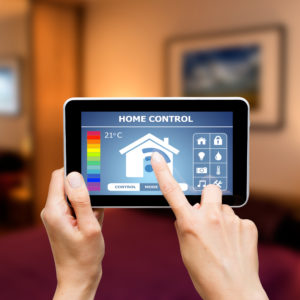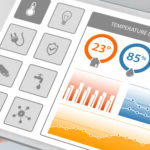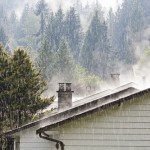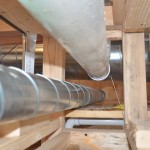 Can you help your customers choose an HVAC system that integrates seamlessly and takes advantage of available energy efficiency and monitoring capabilities?
Can you help your customers choose an HVAC system that integrates seamlessly and takes advantage of available energy efficiency and monitoring capabilities?
Integration is a key trend in the HVAC industry. It refers to HVAC and other building systems like lighting and security that are part of a single automation system. Yes, we’re talking about the smart home. Here are five things to understand about integration.
Improve efficiency
The potential to improve energy efficiency in an integrated home is exciting. Imagine a system where sensors determine whether a room is occupied and adjusts the HVAC and lighting accordingly. Sensors on windows could turn off air conditioning and alert residents when windows are left open.
Monitoring equipment
The monitoring capabilities with HVAC integration provide immense benefits to building operators, homeowners and HVAC professionals. System diagnostics can be sent to the HVAC professional who could then contact the building owner or operator to schedule maintenance before any problems negatively impact the building.
Sensors can be placed in ductwork and vents to measure airflow, static pressure and temperatures. The maintenance savings and improvement in customer service puts more money in everyone’s pockets.
HVAC installers lead the way
HVAC installers have been among the first trades to install smart home features. Because HVAC systems consume 40% of a building’s energy, operators and homeowners have been eager to improve HVAC efficiency through smart technology. As well, HVAC systems were a natural choice for early adoption of smart technology, since they already used sensors. They only needed to add Wi-Fi capabilities, which are now a common feature in HVAC equipment.
Today, homeowners and building operators are looking to expand their smart building capabilities by integrating their HVAC with other building controls. They want to improve efficiencies in all building systems, but they don’t want to have to keep track of their controls on multiple operating systems.
Integrated systems management
Integrated household controls are typically handled by a building automation system (BAS), also called building management system (BMS). These systems are made up of software and hardware and a user interface of some kind.
A BAS seems to solve most of the problems of a building operator, and in many ways it does, but it’s not quite that simple. The big issue, according to Robert McDowall, author of Fundamentals of HVAC Control Systems, is interoperability. Each BAS uses an Internet protocol to communicate with the equipment in the building, and vendors for equipment such as HVAC and lighting use different protocols as well.
Some protocols are proprietary, meaning that the owners share the protocol selectively. Proprietary protocols don’t always play well with others. The other category is open protocols, which anyone can use. Many systems using proprietary protocols have a long list of compatible equipment, but as general rule, systems using open protocols are easier to integrate.
Perhaps the most well known proprietary protocol is Nest Weave. Open protocols that work well with other systems and are commonly used in HVAC include Zigbee, BACnet, LonTalk.
Integrated installation
When you are doing an install, either a retrofit or a new build, you will need to know what other systems are in place so that you can install equipment that uses a compatible protocol. Where there are no systems in place, install an HVAC system with a protocol that you know will integrate well with other systems. The day will come when your client tries to implement other smart technologies, and they will thank you for helping them make the right choice.
You’re also going to want to install a good HVAC monitoring system that will keep you informed on the equipment diagnostics.
Smart home features are popular because of the promised cost savings, and the technological possibilities are exciting, no question. But, remember that energy efficiency starts with a well-constructed building with an airtight envelope outfitted with high-quality vents.



